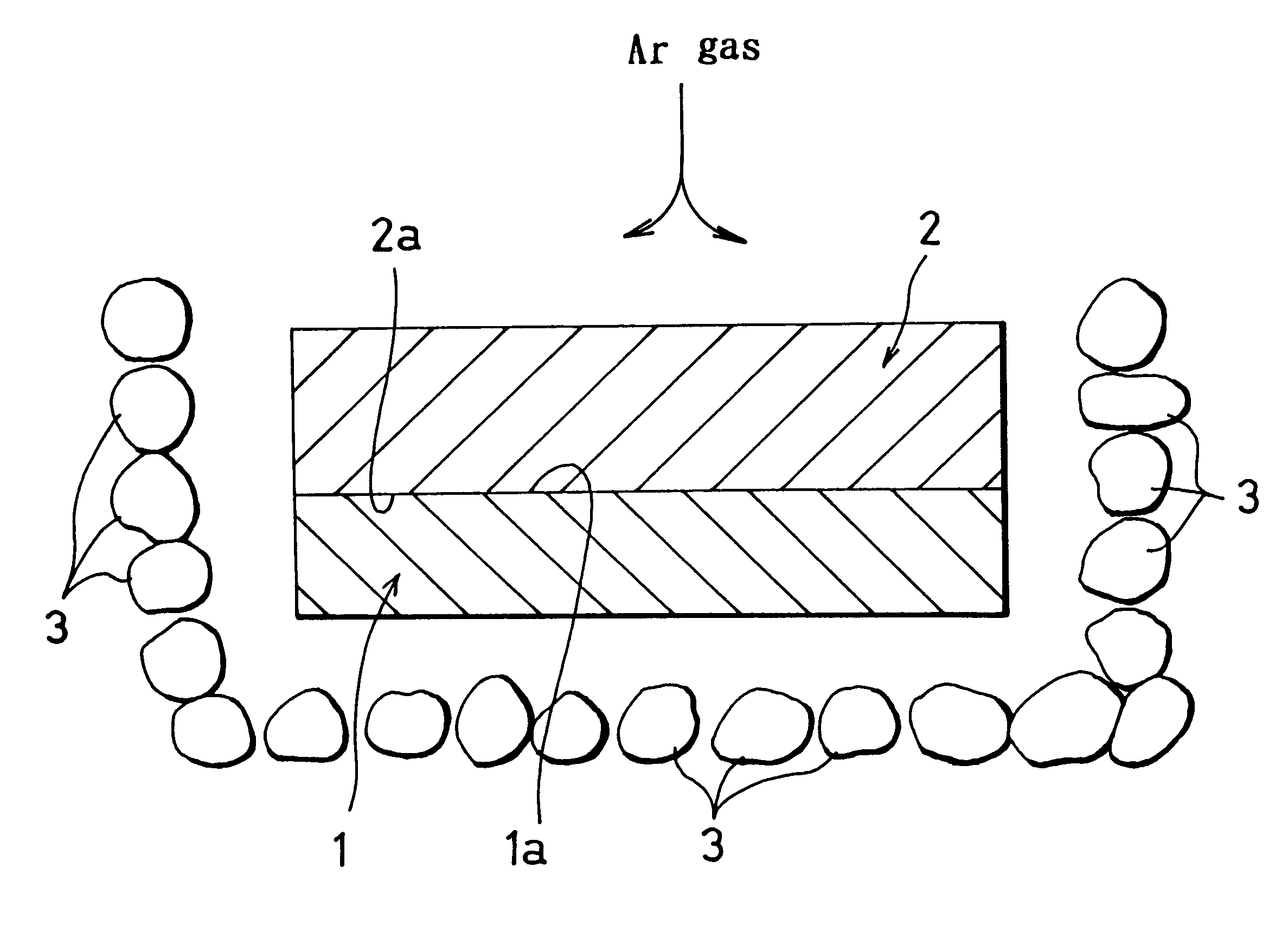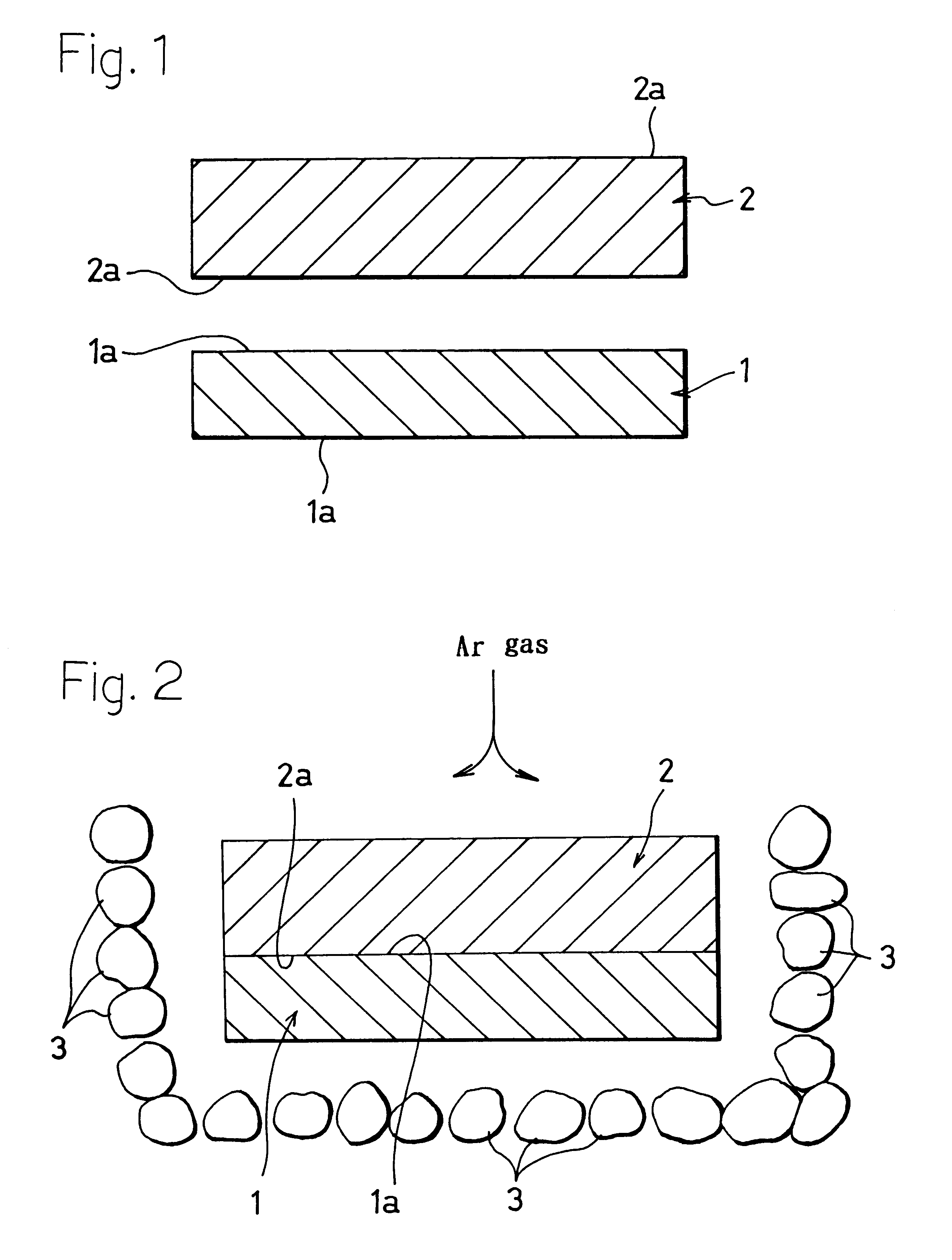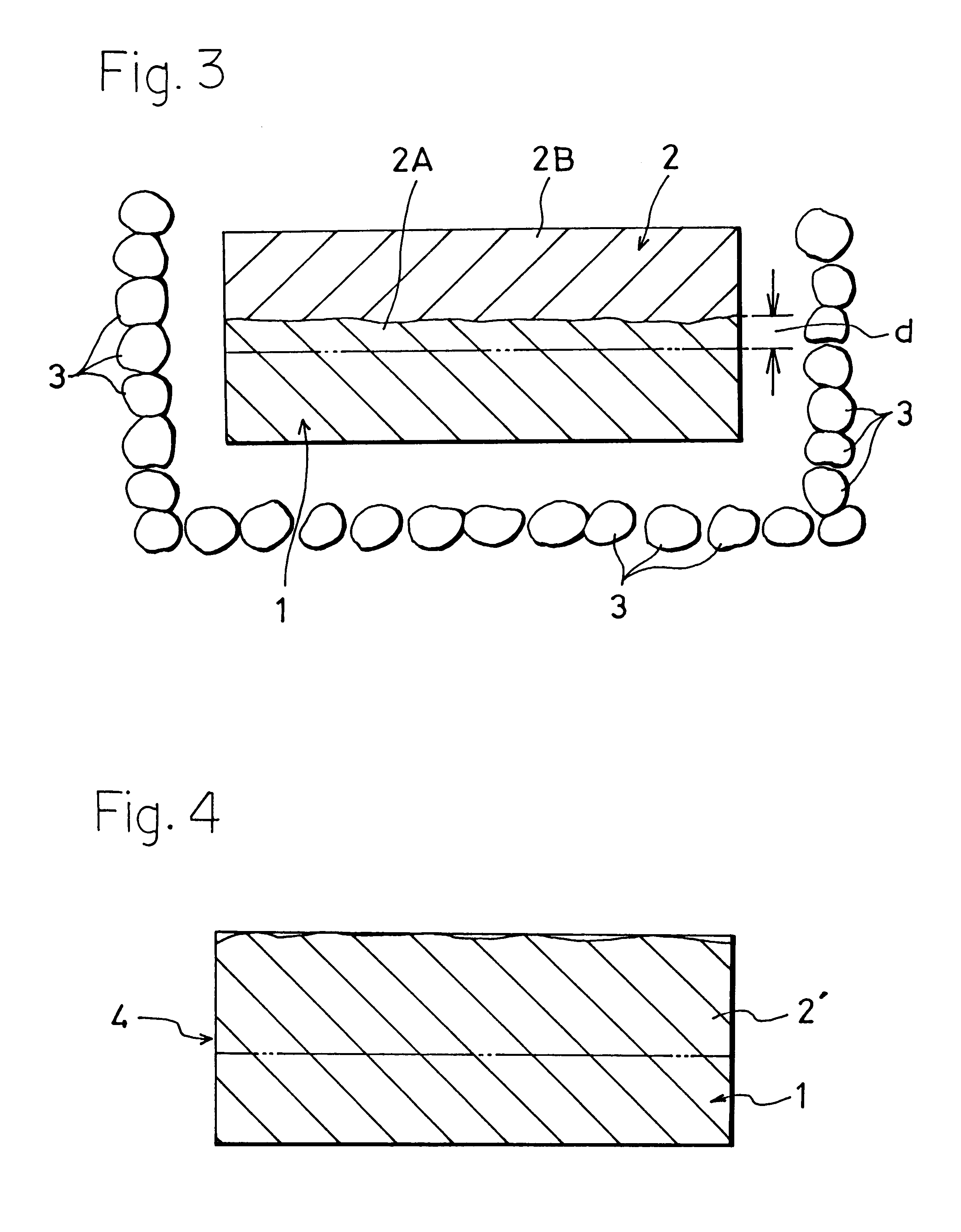Single crystal SIC and method of producing the same
- Summary
- Abstract
- Description
- Claims
- Application Information
AI Technical Summary
Benefits of technology
Problems solved by technology
Method used
Image
Examples
Embodiment Construction
Referring now to the drawing, preferred embodiments of the present invention are described below.
FIG. 1 is a diagram of a material employed in producing a single crystal SiC according to the present invention. In FIG. 1, 1 designates a single crystal hexagonal .alpha.-SiC substrate (6H type or 4H type), which is formed so as to have each plate-shaped SiC, in cutting out numbers of plate-shaped single crystal SiC pieces 1A from a single crystal .alpha.-SiC lump 1' produced by the Acheson method as shown in FIG. 5 and U.S. Pat. No. 4,419,336 and U.S. Pat. No. 4,686,032, top and back surfaces 1a, 1a thereof are processed, thereby being formed so as to have a thickness of 0.5 mm, so that (0001) surface of each plate-shaped single crystal SiC piece 1A may function as a vertical axis.
2 designates a polycrystalline cubic .beta.-SiC plate produced separately by thermal chemical vapor deposition (hereinafter referred to as thermal CVD) at a temperature in a range of 1300 to 1900.degree. C. I...
PUM
 Login to View More
Login to View More Abstract
Description
Claims
Application Information
 Login to View More
Login to View More - R&D
- Intellectual Property
- Life Sciences
- Materials
- Tech Scout
- Unparalleled Data Quality
- Higher Quality Content
- 60% Fewer Hallucinations
Browse by: Latest US Patents, China's latest patents, Technical Efficacy Thesaurus, Application Domain, Technology Topic, Popular Technical Reports.
© 2025 PatSnap. All rights reserved.Legal|Privacy policy|Modern Slavery Act Transparency Statement|Sitemap|About US| Contact US: help@patsnap.com



